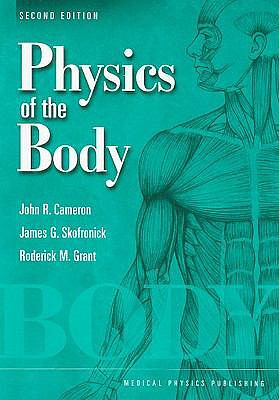"I share your concern about the potentially serious effects of wind turbine generated pressure changes" (Ontario, Canada)
Jan 17, 2010
·

Professor Michael A. Persinger, PhD
Behavioural Neuroscience and Biomolecular Sciences Programs
Laurentian University
Ontario, Canada
“There are both theoretical and empirical bases to your concerns about the direct and indirect effects of extremely low frequency and low frequency, mechanically induced changes in air pressure. As noted in my book, there have been clear correlations between infrasound generation and adverse experiences, including sickness, nausea, and dizziness.
“The mechanisms involve . . . resonances with the whole human body, because of its intrinsic oscillations between 6 Hz and 20 Hz, with amplitudes in the order of five micrometers. The linear distance model, i.e., the amplitude decreases linearly with distance, is not always correct because there can be propagation within an earth surface/upper atmosphere wave guide. Hence the effects could occur at far distances with no obvious influence intermediately (emphasis added).”
Dr. Persinger, a neuroscientist, recently wrote the following letter to the Manitoulin Coalition for Safe Energy Alternatives. Reprinted with Dr. Persinger’s permission—Editor.
»»»»»»»»»»»»
There are both theoretical and empirical bases to your concerns about the direct and indirect effects of extremely low frequency and low frequency, mechanically induced changes in air pressure. I offer the following facts and comments for your information.
(a) As noted in the chapter “Mechanical stimuli of the weather matrix: Barometric pressure, wind and infrasound” in my book Weather Matrix and Human Behavior (Praeger, 1980, pp.182-206), there have been clear correlations between infrasound generation and adverse experiences, including sickness, nausea, and dizziness.
The mechanisms involve both resonances with the whole human body, because of its intrinsic oscillations between 6 Hz and 20 Hz, with amplitudes in the order of five micrometers. The linear distance model, i.e., the amplitude decreases linearly with distance, is not always correct because there can be propagation within an earth surface/upper atmosphere wave guide. Hence the effects could occur at far distances with no obvious influence intermediately.
(b) As aptly stated in Cameron et al. (Physics of the Body, Medical Physics Publishing, 1992), the power density of the faintest sound discernable to the ear at 1000 Hz is approximately 10-12 W/m2. Moderately complex calculations indicate even this small quantum is sufficient to displace molecular components within the range of the width of the hydrogen atom (in the order of 10-11 m). Because the effect is frequency dependent, decreasing to 10 to 100 Hz would result in displacement values within the range of the cell membrane. There are approximately one to 10 trillion cells, each with a membrane, in the human body.
(c) The most frequent component of sound level pressure that acoustic engineers and other “experts” ignore are the extremely low frequency amplitude modulations of higher sound frequencies. In other words, the audible frequencies may be within the 500 to 5,000 Hz range, but their generation is not consistent over time. Amplitude fluctuations between 5 to 20 Hz are experienced as “fluttering” or “beats” that are both fatiguing and disrupt concentration. I have attached a reprint of one of our publications in a refereed, scientific journal. This was one of the first experimental (rather than correlational) studies that actually demonstrated a large negative impact upon behaviour even though the “average sound pressure level” was considered within acceptable ranges by architects and acoustic engineers. The expertise for measuring impact is usually accommodated by behavioural scientists.
(d) The critical role of individual differences in sensitivity to “sub-threshold” air pressure fluctuations cannot be over-emphasized. Sensitivity for all sensory modalities displays a normal distribution. As recently reported in the journal Science, some individuals can discern varying sound pressures from ordinary vocalization through skin sensors. Most people appreciate the individual differences from chemical substances (for example the untoward effects of allergies to peanut butter or medications). We have legal remedies for people who have particular sensitivity to cigarette smoke or perfumes. However, this important factor appearsto be neglected in the debate concerning sound pressure fluctuations from wind turbines.
(e) I am not sure of the rationale for the statements that there are no studies that demonstrate adverse effects from the sound pressure levels and their beats from wind-turbine sources. There are multiple references in refereed scientific journals, although many of them are written in Chinese.
I share your concern about the potentially serious effects of wind turbine generated pressure changes at significant distances from the site. The problem is similar to the premature application of 750 kV lines (for which I was a consultant) and the various US Navy projects (e.g., Sanguine, Seafarer) that resulted in significant health problems because political and economic enthusiasm eclipsed perspicacious and informed decisions.
I would recommend a delay in the construction and operation of wind turbines in your region until an objective environmental impact study is completed.
Professor Michael A. Persinger, PhD
Departments of Biology and Psychology
Behavioural Neuroscience and Biomolecular Sciences Programs
Laurentian University
Ontario, Canada
·



Comment by mark duchamp on 10/17/2013 at 1:30 pm
I believe that amplitude modulation at low and very low frequencies, as underlined by Professor Persinger above, is an important aspect of the nuisance issue regarding wind turbines.
If the sound emitted by the turbines were constant, my hunch is that it would not disrupt sleep in the same way.
A dripping faucet will keep people awake, while much more intensive noise from the airport nearby won’t. Until official studies address this problem, they will be out of focus.
There are other aspects of course, such as the propensity of very low frequencies to resonate inside closed spaces. But government agencies are doing everything in their power to ignore the particularities of infrasound and other real problems, and to concentrate on noise levels instead.
They will continue to fudge the issue for as long as we let them. We need to simplify our discourse and insist on a couple of well-specified points as above. It’s the keep-it-simple principle.
This is my humble, non-professional opinion, for what it’s worth.